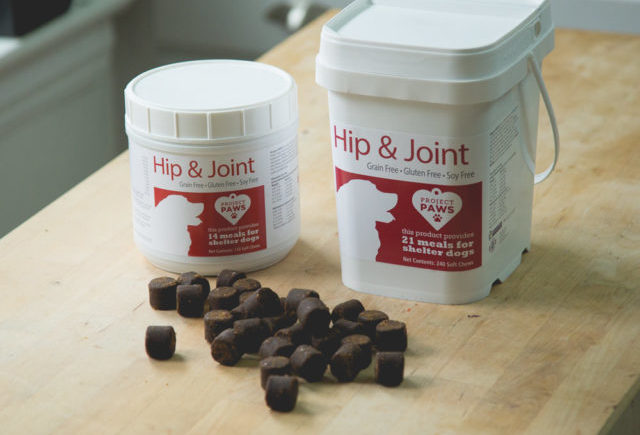
Doctors don’t exactly know the reason why, but there is one condition that both humans and our beloved pets suffer from more persistently in the winter: joint pain.
And while we humans have the ability to reach for pain meds and talk to our doctor about our symptoms, are precious pups do not. In fact, dogs are quite good at keeping their joint pain a secret.
Why do dogs hide their pain? As pack animals, not showing their pain has survival benefits. The ancestors of modern dogs would commonly leave behind a member of the pack who was suffering and slowing down the group as a whole. As a result, dogs have learned to hide their pain quite well.
Fortunately though, there are some more subtle signs we can watch out for:
The Top Signs of Canine Joint Pain

#1 – Weight Gain: Obesity is often an indirect sign of joint, as dogs become less active due to the discomfort.
#2 – Difficulty in getting up to greet you: This is one of the most often cited signals. If your dog usually jumps up to greet you or visitors when they first walk in the door, but suddenly stops this behavior, there may be something wrong.
#3 – Limping: Often arthritic dogs experience limping right after getting up from lying down. The limp may not last for long, and might only occur a few moments after getting up.
#4 – Decreased energy: If your dogs overall energy has taken a turn for the worse, they may be feeling the pains of inflammed joints.
#5 – Irritability: If your dog has become irritable for no apparent reason, they may be suffering from a hidden pain of some kind.
#6 – Increased licking, biting, or chewing: Pay attention to where your dog is licking or grooming themselves. Excessive or unusual attention in one area of the body might be a result of joint pain.
If you have not yet noticed any signs of joint pain, you’re very fortunate, as most dogs will be affected by the condition at some point in their lives. The best time to take action is before symptoms are present.
Sadly, most dogs will be affected at one time or another by joint pain. There are many factors influencing when or how bad the symptoms might be.
In general, the larger the breed, the more likely they are to suffer from joint pain, and the earlier you need to start preventative measures.
What are the top strategies for preventing or limiting the pain of canine joint discomfort?
#1 – Maintain a healthy weight: Make sure you know the healthy weight of your dog. All those treats and table scraps can add up to a lot of calories!
#2 – Consistent exercise: Different breeds need different levels of exercise. Low impact, consistent walks are good for both your dog and yourself. Swimming is a great option for dogs with severe mobility issues.
#3 – Massages: For dogs already suffering from joint issues, a massage can go along way to help relieve tension and increase flexibility. Just make sure you pay attention your dog’s responses and notice which areas might be sensitive to the touch.
#4 – Comfortable bedding: Do not skimp on your dog’s bed! Make sure they have adequate padding for their weight, and replace when worn out. Better yet, let them sleep with you!
#5 – Supplementation: Many veterinarians recommend supplementing with a high quality glucosamine, MSM, and Chondroitin supplement. In recent years, turmeric has also become a popular ingredient for joint support. (our recently released Happy, Healthy brand Joint Care chews has all 4 of these ingredients)
When Should I Begin Using a Joint Care Supplement?
The larger the breed of dog you have, the earlier you should consider supplementation. The following breeds in particular are prone to more severe joint problems. Many veterinarians recommend supplementation for these breeds as early as 3 years old.
- German Shepherds
- Golden Retrievers
- Labrador Retrievers
- Dachshunds
- Newfoundlands
- Bernards
- Rottweilers
- Mastiffs
- Great Danes
Joint pain is an absolutely terrible thing to observe in our dogs. Talk to your vet and come up with a plan. If supplementation is right for your dog, we encourage you to try our Happy, Healthy line of Joint Care Supplements. Not only do we believe it to be the best product on the market, but each bottle provides 14 healthy meals for shelter dogs!
We also offer a hypoallergenic hip & joint soft chew for dogs, for our furry friends with allergies and other sensitivities.
These statements have not been evaluated by the Food and Drug Administration. This product is not intended to diagnose, treat, cure, or prevent any disease. The information on this website is not intended to replace a one-on-one relationship with a qualified health care professional.


